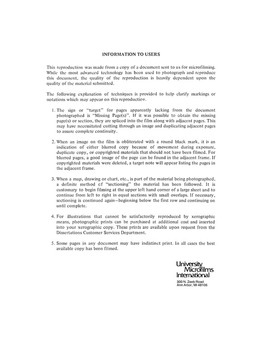| dc.contributor.author | Brooks, Nancy Ellen Carman, | en_US |
| dc.date.accessioned | 2013-08-16T12:28:36Z | |
| dc.date.available | 2013-08-16T12:28:36Z | |
| dc.date.issued | 1982 | en_US |
| dc.identifier.uri | https://hdl.handle.net/11244/5017 | |
| dc.description.abstract | The comparison of word frequencies of the business letters and the business memoranda indicates that a large percentage of high frequency words in business letters are not high frequency words in business memoranda; that a large percentage of high frequency words in business memoranda are not high frequency words in business letters; and that different words need to be emphasized when teaching vocabulary of business letters and business memoranda. | en_US |
| dc.description.abstract | All words appearing in the body of the business letters, business memoranda, and textbook items were keypunched on computer cards and tabulated by computer to establish a data base of running words from each of the three types of data. A computer program was written to provide separate rank order and alphabetical lists, including frequency count, of the words in each data base. | en_US |
| dc.description.abstract | The analysis and comparison of the data indicated that a large percentage of high frequency words in the textbook data base are not high frequency words in the business letter data base and the business memoranda data base. This analysis indicates that the words emphasized in the textbook materials do not reflect the high frequency words used in letters and memoranda in businesses with 500 or more employees in Oklahoma. | en_US |
| dc.description.abstract | The problem of this study was an analysis and comparison of word frequencies of business communications from firms in Oklahoma with word frequencies of the second-semester college textbook for Gregg Shorthand, Series 90. The word frequencies of materials from these sources were compared to determine whether a difference existed between the business communications and the instructional materials. | en_US |
| dc.description.abstract | The researcher recommends that (1) a replicate of this study be made in a different geographical area; and (2) teachers supplement textbook materials using words obtained from business when teaching vocabulary to second-semester college shorthand students. | en_US |
| dc.description.abstract | Data were obtained by requesting one copy of a letter and one copy of an interoffice memorandum from 102 businesses with 500 or more employees in Oklahoma. Usable material was received from 83 firms, resulting in a response rate of 81 percent. A total of 83 usable business letters and 80 usable business memoranda was received. A table of random numbers was used to select 83 items from the reading and writing practice materials of the textbook lessons, corresponding with the number of usable business letters received. | en_US |
| dc.format.extent | vi, 162 leaves ; | en_US |
| dc.subject | Education, Business. | en_US |
| dc.title | A word frequency analysis of business communications and shorthand textbook materials. | en_US |
| dc.type | Thesis | en_US |
| dc.thesis.degree | Ph.D. | en_US |
| dc.thesis.degreeDiscipline | Jeannine Rainbolt College of Education | en_US |
| dc.note | Source: Dissertation Abstracts International, Volume: 43-07, Section: A, page: 2207. | en_US |
| ou.identifier | (UMI)AAI8225494 | en_US |
| ou.group | Jeannine Rainbolt College of Education | |
